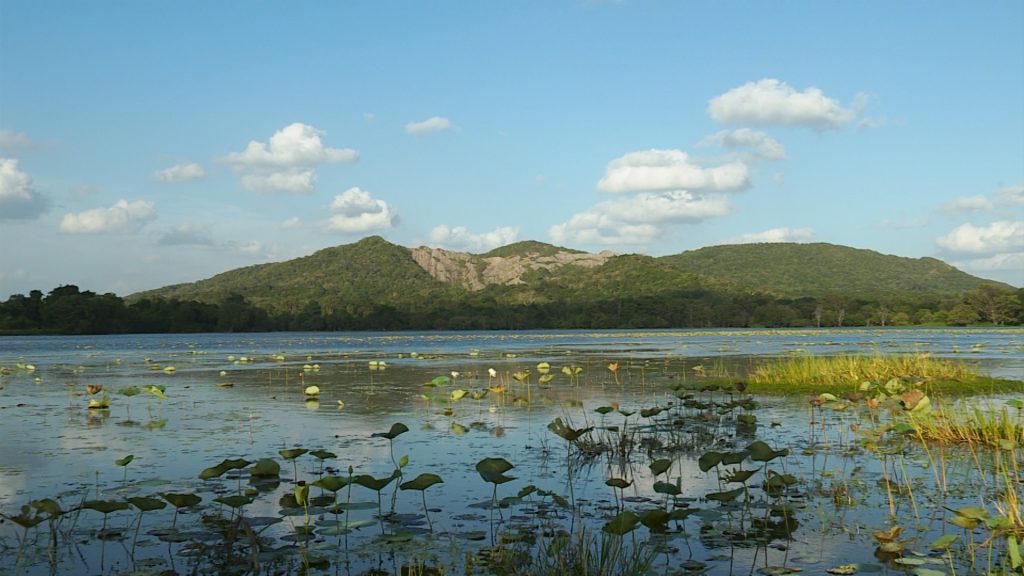Heritage
Sigiriya
Sigiriya is an enormous 360-meter-high-rock converted to a fortress by the parricidal King Kashyapa I, who reigned for 18 years between 477 and 495 A. D. He cleared the rock summit and built his palace as an abode of God King. Simultaneously, the surrounding lands of the rock transformed into a Royal Pleasure Garden with pools and shallow serpentine streams paved with marble kerbs. Underground channels and cross channels were built to supply water under pressure to fountains operating in a simple principle of gravity and pressure. To have access to the summit at the ground level he built a stair case in the form of a lion and the protective wall on the mid way finished with glistening surface had been used by the visitors to record their graffiti in the form of Sinhala verses. Out of the world-famous frescoes similar to those of Ajanta caves in India now survive about twenty-one. Considering the entire Sigiriya complex as one unique creation the UNESCO declared World Heritage Site in 1982.
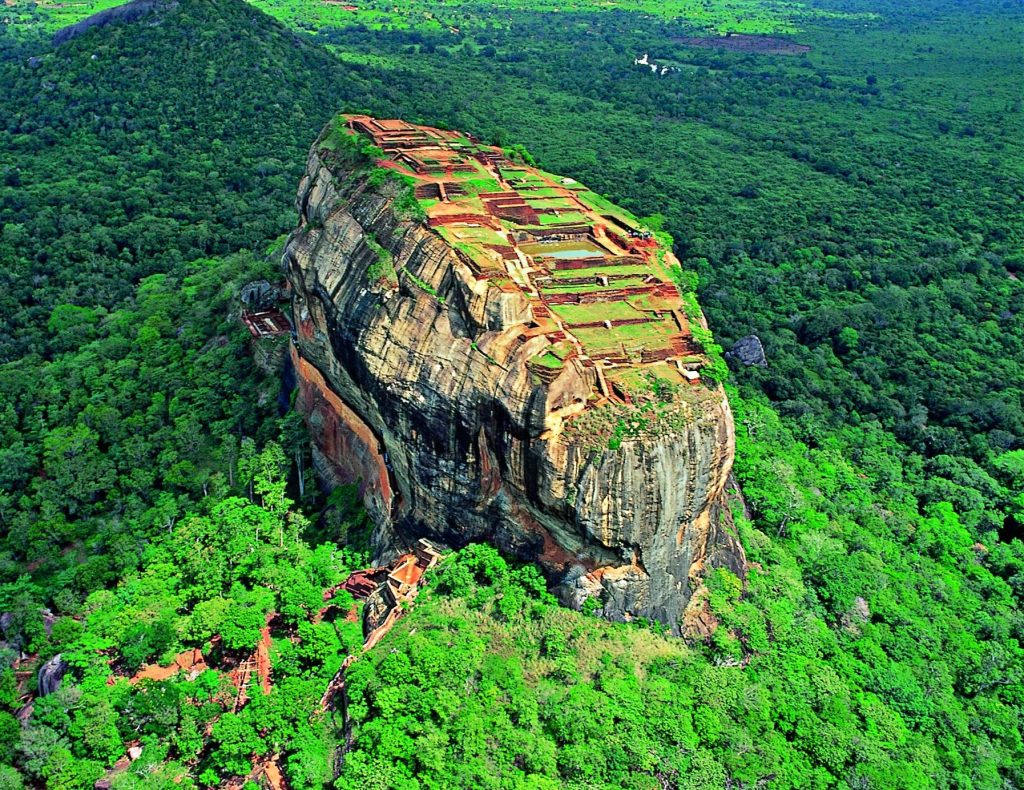
Anuradhapura
As the first kingdom, capital and centre of Buddhism in the island, Anuradhapura carries the reputation of being the hub of Sri Lankan civilization which has a growth of over 22 centuries and it has seen the reign of more than 100 kings. King Pandukabhaya was the founder and first ruler of the Anuradhapura Kingdom. It was in reign of King Dutugemunu (161–137 BC) that the whole country was unified under the Anuradhapura Kingdom. After unifying the country, he helped establish Buddhism on a firm and secure base, and built several monasteries and shrines including the Ruwanveliseya Mirasawetiya and Lovamahapaya. .
Archeologists and historians consider that the wisdom enriched by Buddhism at Anuradhapura is the cradle of the national heritage. This splendid site, with its places, monasteries and monuments, was re-discovered in the 19th century and is now a heritage city. The UNESCO declared Anuradhapura a world heritage site in 1982.
The Atamasthana or eight sacred places are the main sites in the sacred city of Anuradhapura, namely, Sri Maha Bodhi, Loha Pasada or Brazen Palace, Ruwanweliseya, Thuparama, Abhayagiriya, Mirisawetiya, Lankaramaya and Jetavanarama.
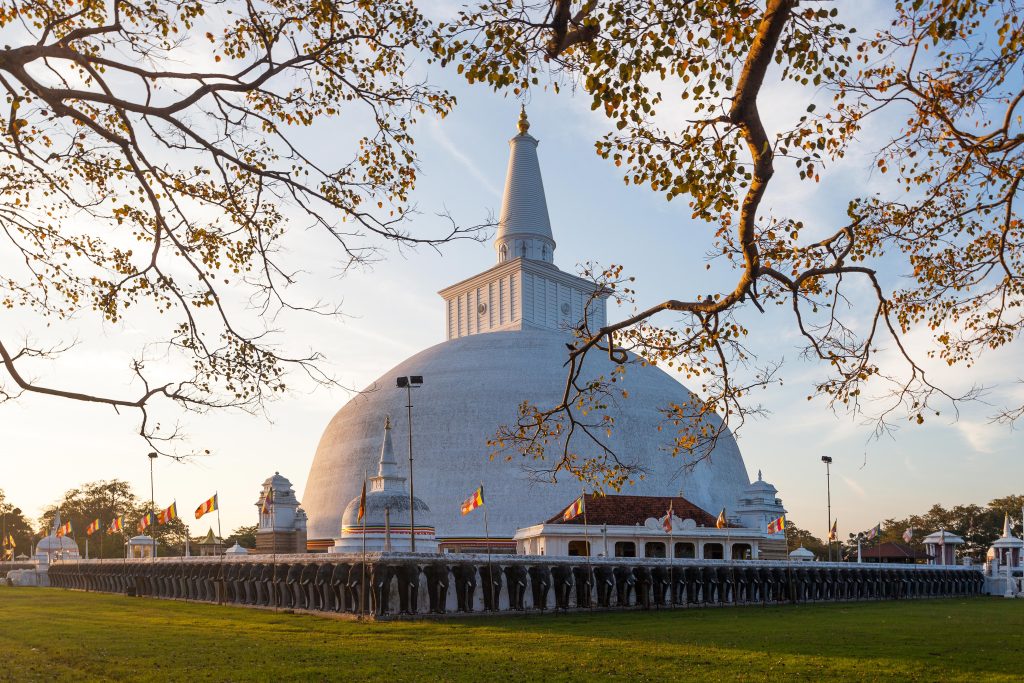
Polonnaruwa
The glory of Anuradhapura was destroyed by the South Indian invaders, particularly the Cholas, compelling the Sinhala monarchs to establish the capital in a different location Pulatthinagara – modern Polonnaruwa. Unlike Anuradhapura, the monuments are concentrated in close proximity nevertheless in several localities forming clusters of monuments. Each cluster belongs to more or less one single builder. When all the monuments are taken into consideration resembles multiple characteristics. The architectural features, sculptures, paintings and writings on stone have its own identity of Polonnaruwa type influenced not only by Buddhism but also by Hinduism as well. The UNESCO declared Polonnaruwa a World Heritage Site in 1982

Galle Dutch Fort
The visitors to Galle since 1406 including Chinese Admiral Cheng He, Arabian traveler Ibn Battuta and subsequently by many others during the last five centuries took the fame of Galle far and wide. The port of Galle situated in a strategic central location straddling the sea lanes of the Indian Ocean was a sanctuary for all who called at it. Galle then gained reputation not as a city with intense density of inhabitants but also as a rare meeting point of the trans-oceanic monsoon systems providing a gateway to hinterland rich in tropical products and ancient crafts and in short was an emporium of exquisites. The fort site is a rocky promontory selected by the Portuguese in the third decade of the 16th century to construct a Fortress for their defense. After about little over a century, in 1640 they were chased out by the Dutch and possessed it for another one and a half century. The power changed hands again to the British in 1796. They too left in 1948 allowing independent Sri Lanka to administer it. Thus the built environment of Galle resembles multicultural features of all four nations, craftsmanship, solidness and the best preservation encouraged the UNESCO to declare it a World Heritage Site in 1988.
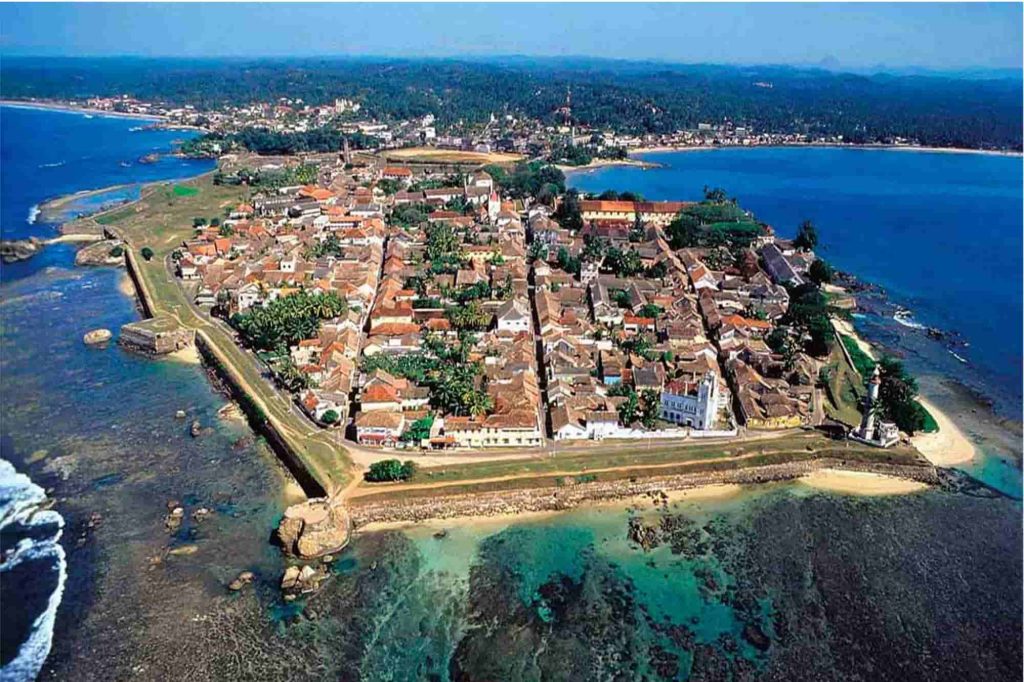
Dambulla
Dambulla had been a famous cave-dwelling since several centuries before Christ. This over hanging rock located about 160 meters above the surrounding plain said to have had seventy three caves in its cluster. In the eleventh and twelfth centuries Dambulla temple has seen some improvements with royal patronage. The last revival of the present temple complex took place during the reign of King Kirti Sri Rajasinha of Kandy. Several image houses including Dev Raja Vihare, Maha Raja Vihare, Pas Pilima Vihare and Aluth Vihare were completed at this revival. The entire cave temple complex has exquisite murals covering 2100 m2 and 160 statues of different figures in various postures resembling a mixture of religious and secular sculptures. Dambulla Cave Temple was declared a World Heritage Site in 1991 by the UNESCO.
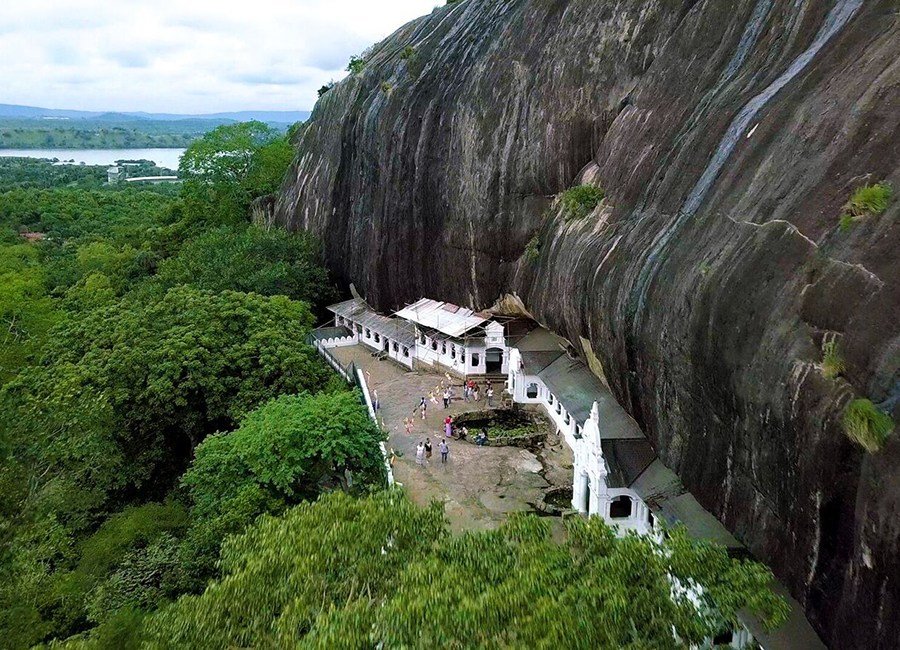
Mihintale
Mihintale is a rocky hill, sixteen kilometers east of Anuradhapura. It is considered the cradle of the Sinhalese civilization. King Devanampiyathissa was converted to Buddhism by Arahath Mahinda, at this historic place in the 3rd century BC.
Mihintale was originally a pleasure garden of Kings of Anuradhapura even before King Devanmpiyathissa. Later it was converted into a monastery with several dagabas belonging to different sects of Buddhism.
Legend has it that this mountain was sanctified by no less a person than the Buddha himself- 3 Centuries before the advent of the sage Mahinda. It is thus one of the sixteen holy places or Solosmastana in the island and held in great veneration. Since the arrival of Ven. Mahinda, Missaka Pabbatha came to be better known as Mihintale, Plain of Mihindu, and the Sinhala name by which the great Apostle is known.
Geographically, the mountain range consists of four main hills, Mihintale, Eth Vehra, Rajagiri Lena and Anaikutti.
With the advent of Arahath Mahinda, the son of the great emperor Asoka in India with his six disciples in the middle of the 3rd century BC, Buddhism was introduced to the island on a Poson Full moon Poya Day. Sri Lanka thus became of the most important strong holds of Buddhism in South and Southeast Asia.
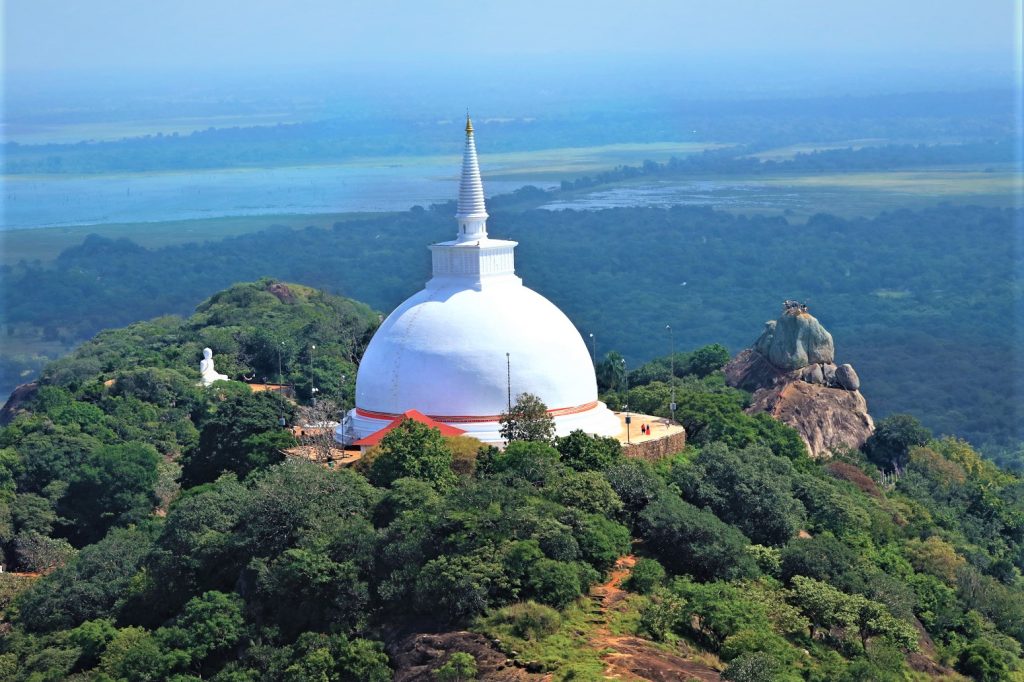
Yapahuwa
The Yapawwa rock is an ancient fortress which rises to the height of 90m above the surrounding plains. Built by King Buwanekabahu I (1272- 1284 AD) in the 13th century BC, this is considered as the 4th kingdom of Sri Lanka. The history of Yapahuwa limits to only 11 years when the Indian Invaders captured Yapahuwa and it was extinct. The explorations of the abandoned Yapahuwa began after 1891. Under the guidance of the 1st commissioner of Archeology of Ceylon- Mr. H.C.P.P. Bell, many years proceeded with an official exploration to uncover the wonders associated with the rock.
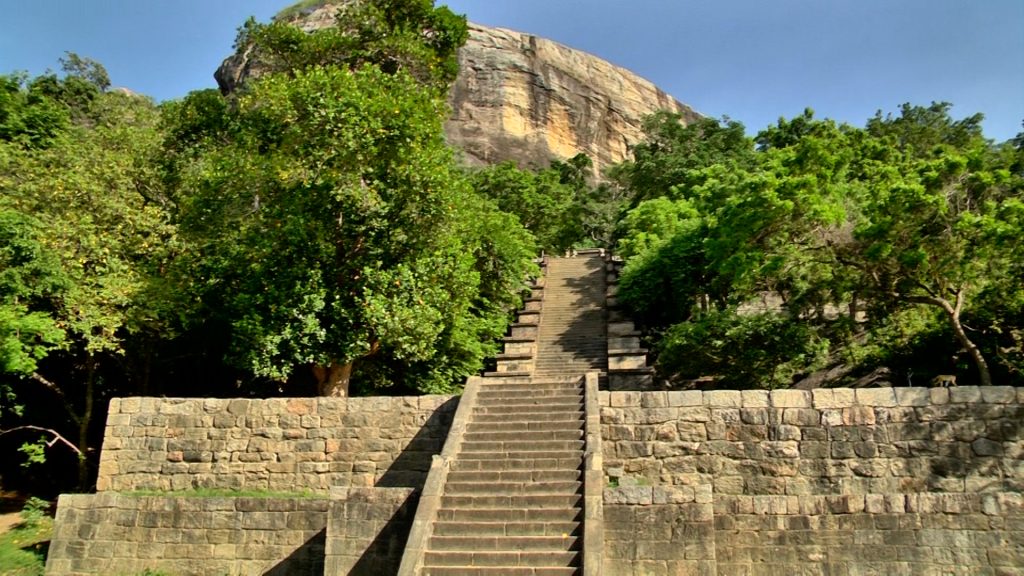
Dambadeniya
Dambadeniya was selected as the capital of the 3rd kingdom of Sri Lanka by King Vijayabahu III in the 13th century AD. After Kalinga Maga’s invasion in 1215 AD, Polonnaruwa the 2nd capital of Sri Lanka was extinct. In order to solve other parts of the island from Maga’s further invasion; divisional rulers built fortresses on the top of the rocks in some areas, in the island.The chronicles states that the Vijayabahu built his fortress on the top of the Dambadeniya rock. It is said that Dambadeniya’s ruling division was more powerful than the other ruling divisions in the country. In 1232 AD Vijayabahu established the 3rd kingdom of Sri Lanka in Dambadeniya and became the first king of the Dambadeniya dynasty as King Vijayabahu III .
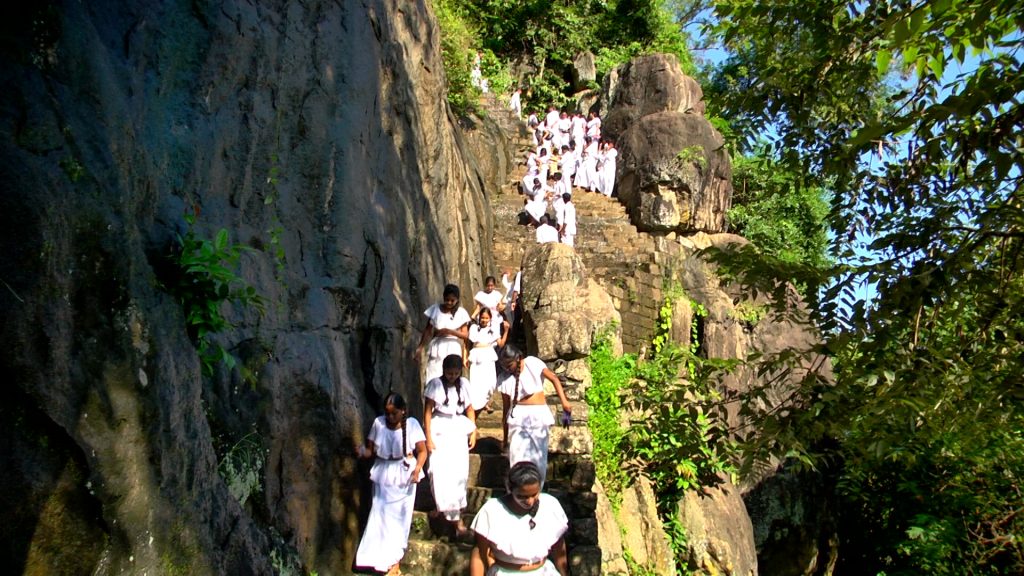
Gadaladeniya
The Gadaladeniya ancient temple is considered to be the largest constructed stone temple in Sri Lanka. This marvelous creation was built by King Buwanakabahu IV of the Gampola Kingdom in 1344 AD and offered to most ven. Dharmakeerthi Thero. The temple was originally named as Dharmakeerthi Viharaya.The temple was constructed on a summit of a rock according to a South Indian architectural design by Ganeshwarachari, the Architect from South India.
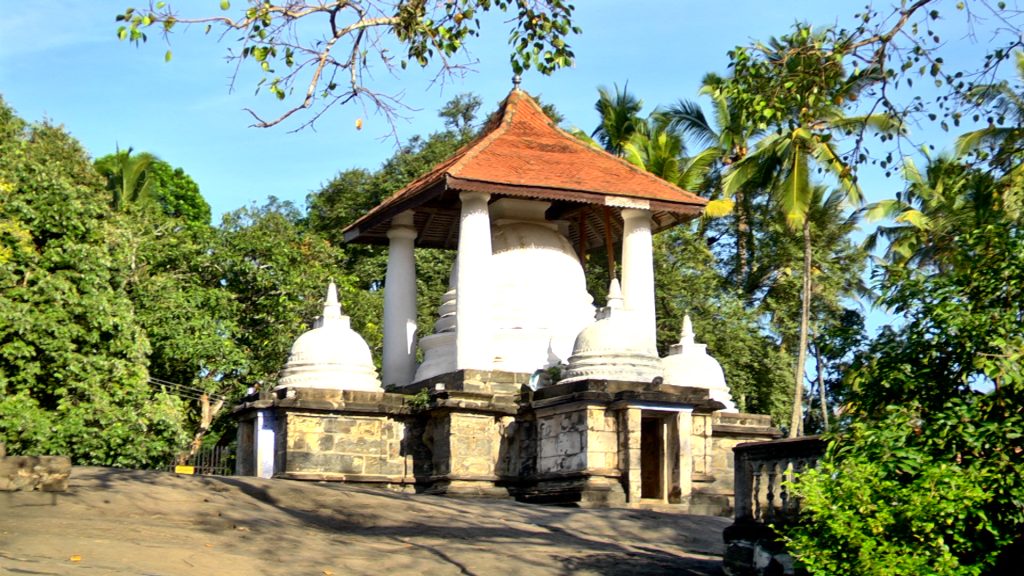
Embekka
The Embekka Devalaya is situated about 14 kilometers from the historic city of Kandy. History states that this was built by King Wickramabahu III who reigned the Gampola Kingdom during 1357-1374 A.D.
The wooden carvings seen at Embekke Devalaya are the most outstanding and are 514 in total. These have been carved by a wood craftsman named Delmada Devendra. Each pillar has eight floral designs or liyapath carved a few feet above the ground level and also above the wood panel carvings.
The speciality of Embekke Devalaya is that it is a monument par excellence of Sri Lankan Architecture with unique beauty that had been created by the talented craftsmen at the time. This therefore, made UNESCO recognize these as the most outstanding wooden carvings to be found in anywhere in the world.
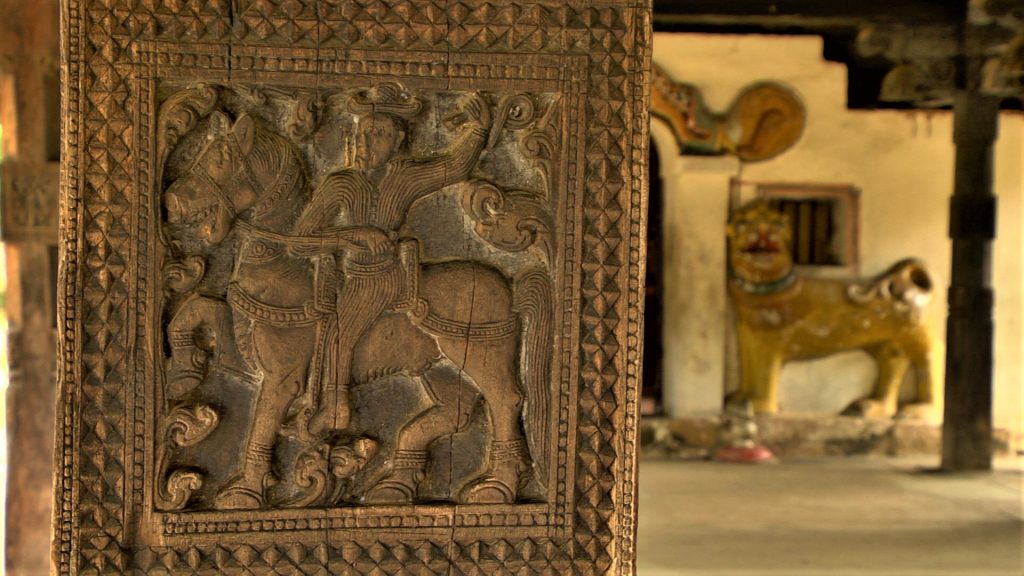
Lankathilake
The ancient Lankatilaka Vihara is situated in the Kandyan district of Sri Lanka. It is located in the Daulagala road about 4 km from the Pilimatalawa junction. It is considered as one of the most magnificent architectural edifice created during the Gampola kingdom era.
The history of the temple goes back to the 14th century. King Bhuvanekabahu IV had built this temple in 1344 AD. The King entrusted the construction of this temple to his Chief Minister Senadhilankara, who then successfully completed the construction of the temple. The Vihara is built on the summit of rock named Panhalgala.
The architectural designs of this temple were done with the advice of a South Indian architect named Isthapati Rayar. According to Professor Senarath Paranavithana- a pioneer and epigraphist of Sri Lankan archeology, this had been designed using a fusion of the Sinhalese architecture of Polonnaruwa era with other Dravidian and Indo Chinese architectural patterns. This is a fine example of a Buddhist – Hindu shrine of the 14th century.
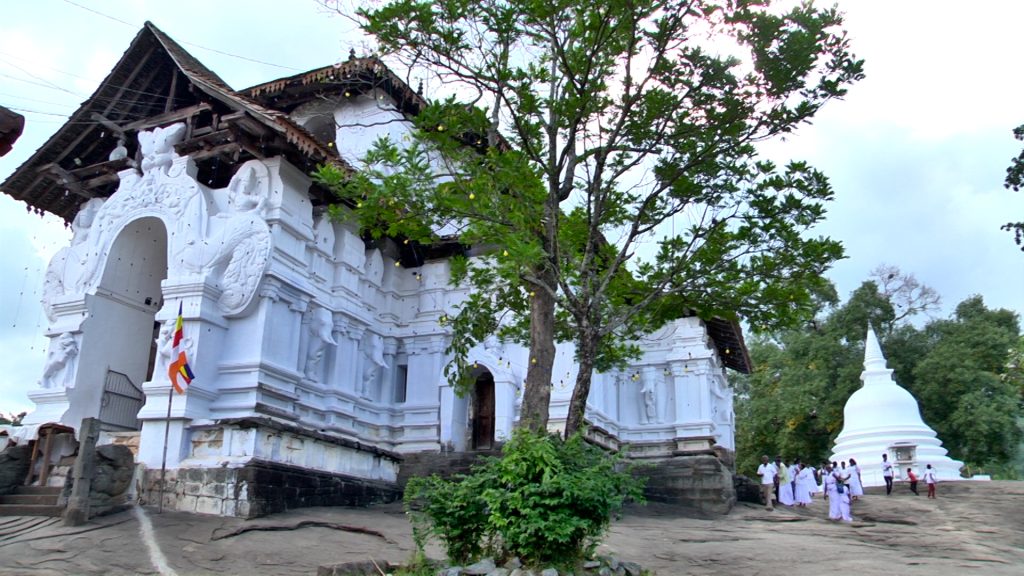
Ridi Viharaya
Ridi Viharaya is built by King Dutugemunu in the 2nd centaury BC as a memorial to the place where he found a silver (ridi) ore mine which was used to finance the building of the gigantic Ruwanweli seya in Anuradhapura.This ancient Buddhist temple site with rock cave hermitages and an image house with Kandyan paintings of the 18th century. Having a history over for 21 centuries and being a place of veneration among the Sri Lankan Buddhists, Ridi Viharaya is situated in the town of Ridigama in the Kurunegala District.
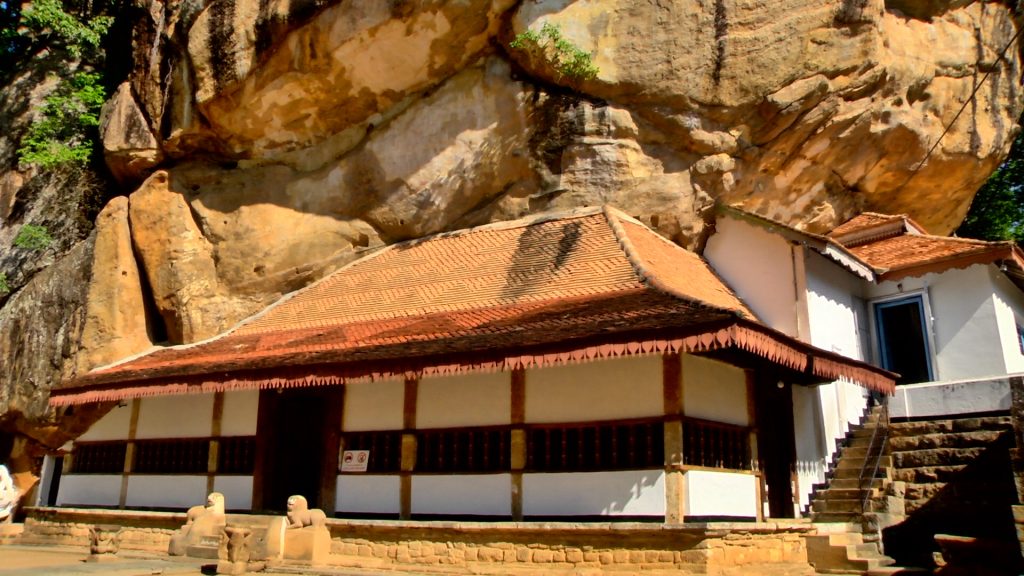
Kelaniya
The Kelaniya Temple is believed to have been visited by the Buddha. Its history therefore goes before 500 BC. The ancient chronicle Mahawamsa records that the original stupa at Kelaniya is enshrined with a gem-studded throne on which the Buddha sat and preached. The temple flourished during the Kotte era but much of its land was confiscated during the Portuguese empire. Under the Dutch empire, however, there were new gifts of land and under the patronage of King Kirthi Sri Rajasingha (1747 – 1782 AD) of Kandyan Kingdom the temple was rebuilt. The temple was restored by lady Helena Wijewardhana in 1927 and layed the foundation stone for the complete restoration of the old vihara. The temple is also famous for its image of the reclining Buddha and paintings which depict important events in the life of the Buddha, in the history of Buddhism in Sri Lanka. Thousands of Buddhists come to see the Buddhist pageant of Kelaniya, popularly referred to as Duruthu Maha Perehera of Kelaniya in the month of January every year.
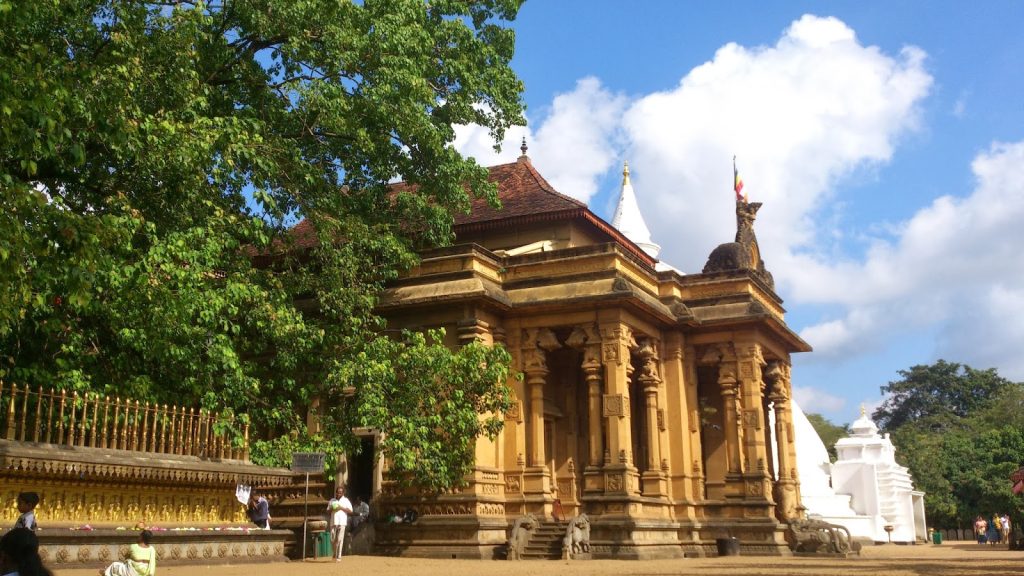
Degaldoruwa
Degaldoruwa Raja Maha Viharaya is an Ancient Buddhist rock temple famous for its Kandyan Era Murals situated in Amunugama in the Kandyan District.The construction of the temple was initiated by King Kirthi Sri Rajasinghe (1747-1782 AD) the King of Kandian kingdom at the time. After his demise the King’s brother Rajadhi Rajasinghe who succeeded him took over and completed the construction of the temple and offered it to Ven. Morathota Dhammakkhanda thero, who was his teacher. The temple had been built at a place where two rocks were touching each other from above and below. A Cave had been made by breaking the rocks large enough to accommodate the Shrine Room of the Buddha and an area leading to the Shrine Room.
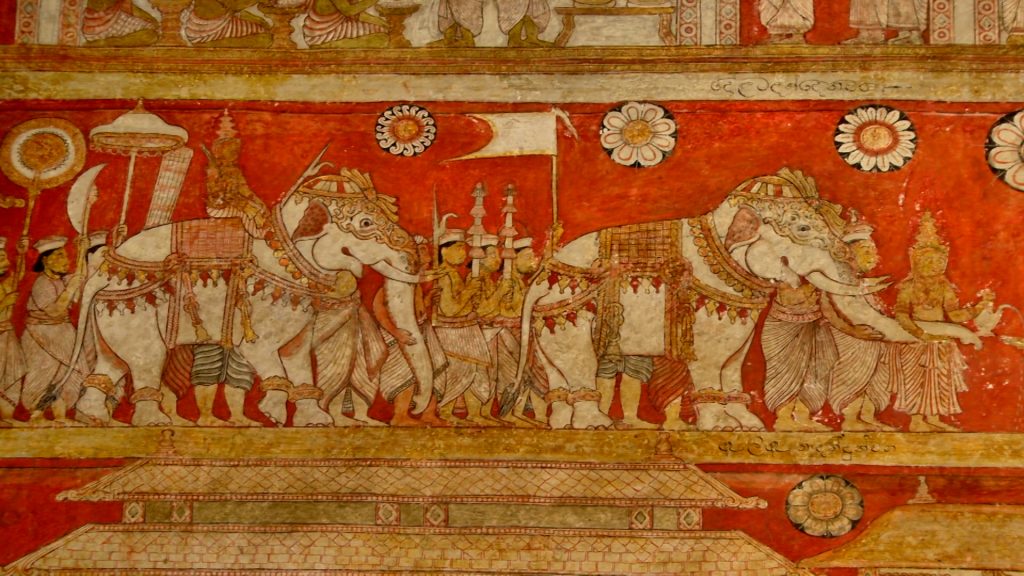
Temple of the tooth- Kandy
Dalada Maligawa (Temple of Tooth Relic) is one of the most venerated Buddhist shrines in the world as it is the home of the sacred tooth relic of the Buddha. It is located in the picturesque valley in the hill country, 115 kms away from Colombo.
In the 4th century AD Prince Dantha and Princess Hemamala brought the sacred Tooth relic to Sri Lanka, from India. Then the sacred Tooth Relic became the palladium of the Sri Lankan Kings and was well guarded in all the kingdoms.
King Vimaladharmasuriya I (1592-1604) became the first king of the Kandyan Kingdom and brought the Tooth Relic from Delgamuwa temple in Ratnapura district to its final and present resting place. He built a 3 storied shrine next to his palace and placed the tooth relic there for veneration. Kandy was the last capital of the Sri Lankan kings and is a UNESCO World Heritage Site.
The Kandy Esala Perahera takes place annually in the month of August.This is the world renowned pageant in Sri Lanka that brings visitors from all across the globe. History indicates that this annual pageant had started from the date the sacred tooth relic arrived to Sri Lanka.
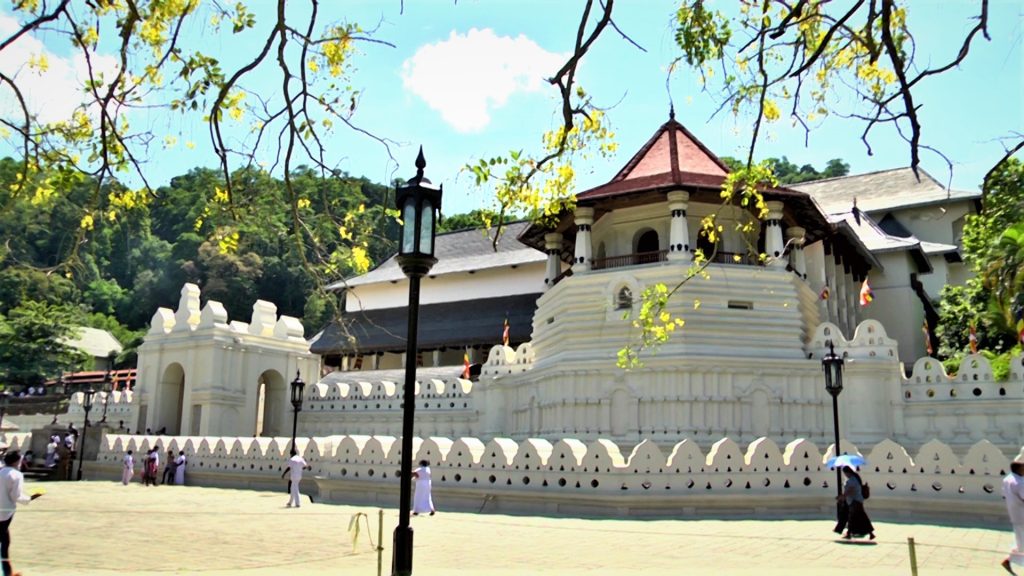
Kataragama
Kataragama a popular pilgrimage destination frequented by adherents of all religions in Sri Lanka. God Skanda is the ruling deity of Kataragama and the main shrine devoted to him. It is also referred to as “Skanda Kumara” and “Karthikaya” in vedith literature and is so referred by Sri Lankan Hindus. The foremost iconographic features of this god are six faces and twelve arms. The annual procession held in July or August is the main event of the shrine.
The history of the shrine dates back to 2 century BC. According to folkrore it was King Dutuemunu who became the king of Anuradhapura kingdom constructed a shrine for God Kataragama. He made a vow in front of the Bodhi tree at Kataragama that he would build a shrine if he won the war against the Cholas who were holding Anuradhapura kingdom. He made his vow a reality after his victory, by building a shrine adjacent to the Bodhi tree. However, the present Kataragama Devalaya is no older than 500 centuries, and consists of subsequent renovations done during this period.
There are three celebrations at Kataragama annually. The Avurudu in April, Esala in July and Ill in Novemnber. These celebrations are organized according to ancient traditions. The Walli Amma Devalaya is associated with all of these celebrations. Kataragama is one of the 16 places of worship hallowed by Buddhists in Sri Lanka. It is one of the shrines for Hindus, Muslim and Christian devotees who seek blessings accordingly. Kataragama is known as a sacred place for devotees of all major religions of this world.
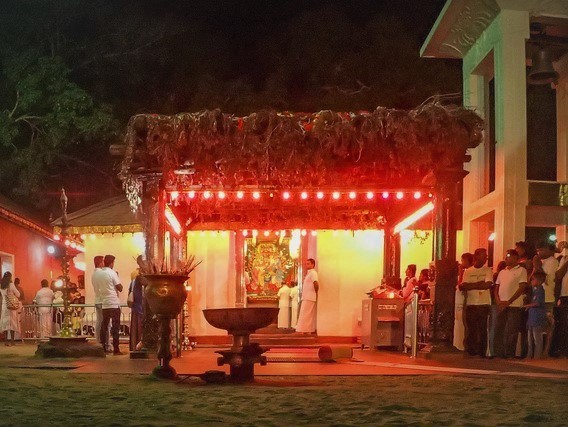
Jathika Namal Uyana
Jathika Namal Uyana is the largest Na-forest and pink quartz mountain in Asia. This unrevealed unique natural heaven has been brought forward to the attention of the world almost 20 years before, by the "Ven. Wanawasi Rahula Thero". The Namal Uyana which is spectacular and attractive with its exceptional natural depths has a history of more than one thousand years.
According to archeological researchers findings, the pink quartz in this historical place has a history of more than 550 millions of years. This unique place "Jathika Namal Uyana" is situated 7kms from Madatugama junction of Colombo - Anuradhapura highway towards the road leading to Adiyagala at Galkiriyagama in Sri Lanka.
National Namal Uyana and the Pink Quartz mountain range covers about 2000 acres. The Pink Quartz range situated within the park is considered to belong to the prehistoric era more than 550 million years old. This is the largest such range in South Asia and in fact a unique phenomenon nature. This eco-system has been declared a national environmental reserve in 2005 due to its historical geographical as well as environmental importance. Indeed this area is highly valued where bio-diversity is concerned.
The history of the Naa Forest goes as far back as 3rd century BC. King Devanampiyatissa ( ) was the then rular of the Anuradhapura kingdom. History records that the Naa Forest was nourished by various kings during the period up to the King Duppula( ).A pillar inscription confirms that this area was declared as a human sanctuary by King Duppula I. There are some ancient ruins at the Naa Forest was confirmed that this was a Buddhist religious site.
For some centuries thereafter the Namal Uyana had been almost lost to the people and neglected. Amidst natural as well as human threats the park flourished on its own. The honour of rediscovering and restoring it to its modern status in 1991 goes to Ven. Wanawasi Rahula Thero who paid an unscheduled visit to this site.He sacrificed his life amidst great threats for the development of Namal Uyana.With great difficulty and with minium facilities and support Ven.Rahula Thero was able to protect this national treasure for posterity.
;The main plant in the National Namal Uyana is the ironwood tree popularly known as “Naa’.There are different species of ironwood and some of these trees are believed to be about 750 years old.
